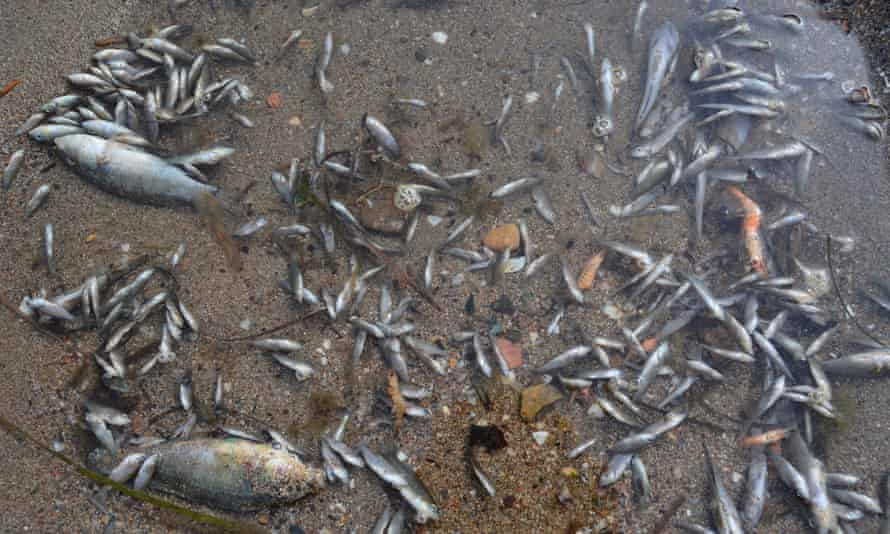Spain prosecutors launch inquiry into mystery fish deaths
Hundreds of dead fish have appeared along shores of one of Europe’s largest saltwater lagoons

Prosecutors in the southern Spanish region of Murcia have launched an investigation after hundreds of dead fish began washing up along the shores of one of Europe’s largest saltwater lagoons.
Residents in the area sounded the alarm this week, posting footage on social media that showed scores of small fish and shrimp littering the beaches of the coastal lagoon known as Mar Menor in south-east Spain.
?EL MAR MENOR VUELVE A MORIR?
Video grabado hoy en la playa de La Lengua de la Vaca en Los Nietos (Cartagena).
Los peces vuelven a salir muertos del agua por la falta de oxigeno que causan los vertidos. pic.twitter.com/5Zd8zPoB2P— Francisco Cortes (@Francortescdp)
Days later, residents started to find blue crabs among the dead, said Ada Garcia Saura of SOS Mar Menor. “It’s a predator that is quite strong and resistant. So if we’re seeing these species that are much more resistant, it hints at the seriousness of what is happening.”
Ecologists have expressed concerns that this week’s grim find could be a repeat of October 2019, when thousands of fish and crustaceans washed up in the same area. Experts at the time blamed the deaths on decades of nitrate-laden runoffs, mostly from agriculture, making their way into the lagoon and sparking vast blooms of algae that depleted the water of oxygen – essentially suffocating the fish.
It was not the first such occurrence in the area; in 2015 the same phenomenon, described as extreme eutrophication, was blamed for colouring the waters of Mar Menor green and killing off 85% of the seagrass.
Researchers have long warned that the area was under extreme pressure. The lagoon sits next to an expansive area of intensive agriculture, stretching about 60,000 hectares (150,000 acres). Poor sewage systems in nearby towns – which have boomed in recent decades as tourism grows in the region – as well as discharge from mining activities have added to the problem.
Agricultural groups have pushed back against their claims, saying they are not to blame for the crisis and arguing that their processes are fully compliant with environmental legislation.
This week, as dead fish again began washing up, residents in the area lashed out at officials. “They haven’t done anything in five years, nothing,” one woman told reporters. “They say all sorts of things,” said another, adding: “We’re seeing a significant environmental change in the Mar Menor and it’s getting worse. It’s dying.”
Regional government officials have denied that the deaths were caused by a lack of oxygen in the water or the presence of a toxic substance, citing preliminary studies conducted by a university in the region. Instead they have hinted that the cause could be linked to the recent heatwave, pointing to data that showed a rise in water temperature from 28.5C (83.3F) to 31C (87.8F) in the span of two days.
Garcia Saura, who is among those pushing to protect Mar Menor by recognising it legally as a “person”, rejected the explanation. “The Mar Menor usually has a temperature of 26 or 27 degrees. We’re almost in a subtropical climate,” she said. “So the flora and fauna of Mar Menor are adapted to these temperatures.”
The conservation charity WWF called on authorities to carry out a broader investigation to ensure eutrophication or a lack of oxygen was not the cause of the fish deaths. “Without a thorough investigation of what happened, it won’t be possible to clarify the causes of this mortality episode,” it said in a joint statement with Anse, a conservation group focused on south-east Spain, on Tuesday.
The two groups called on the regional government to work together to put in place measures aimed at allowing the lagoon to recover, such as reducing intensive agriculture or urban development, as well as improving sewage systems and wastewater treatment. “The mortality episode should not be considered closed so quickly,” it said.
